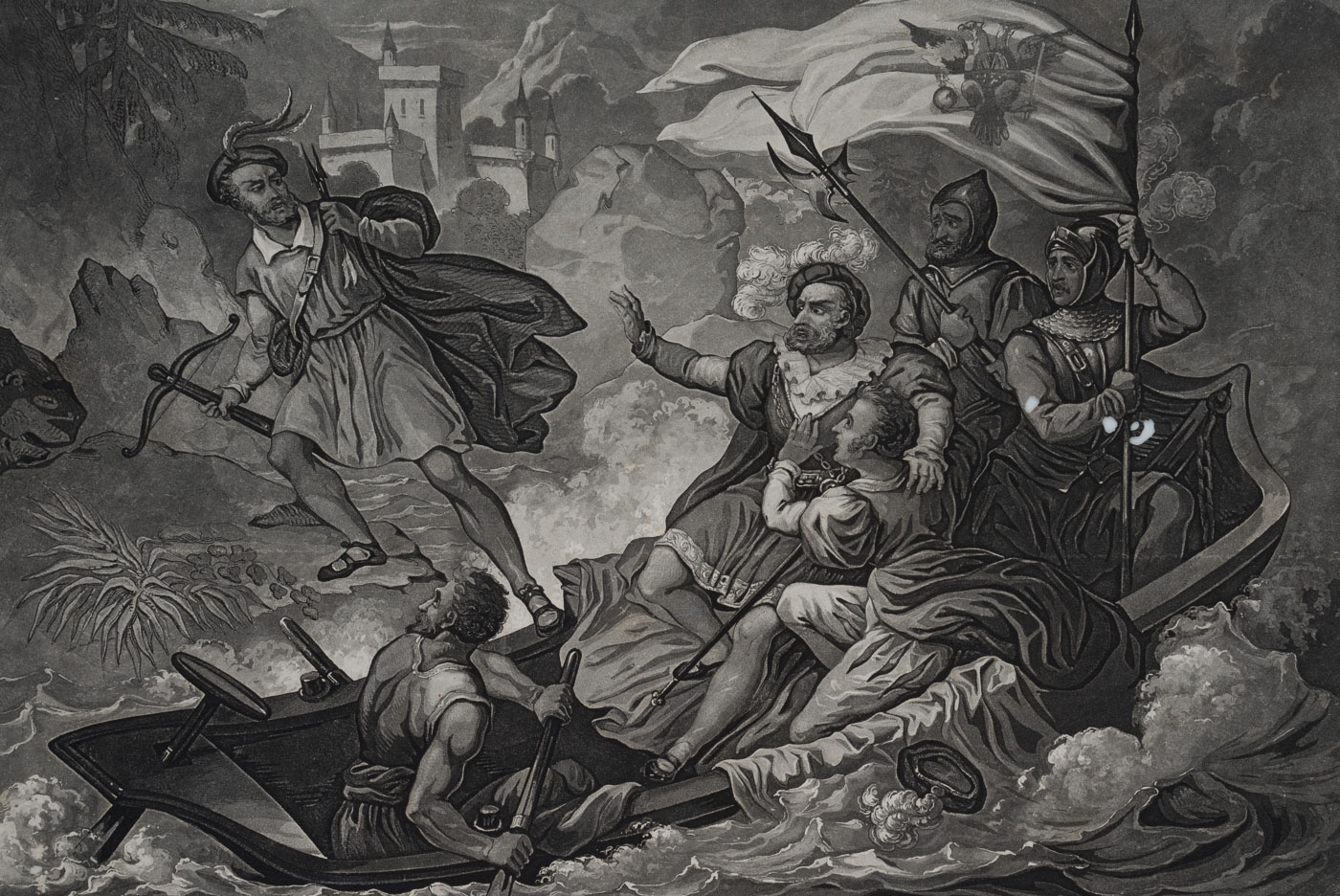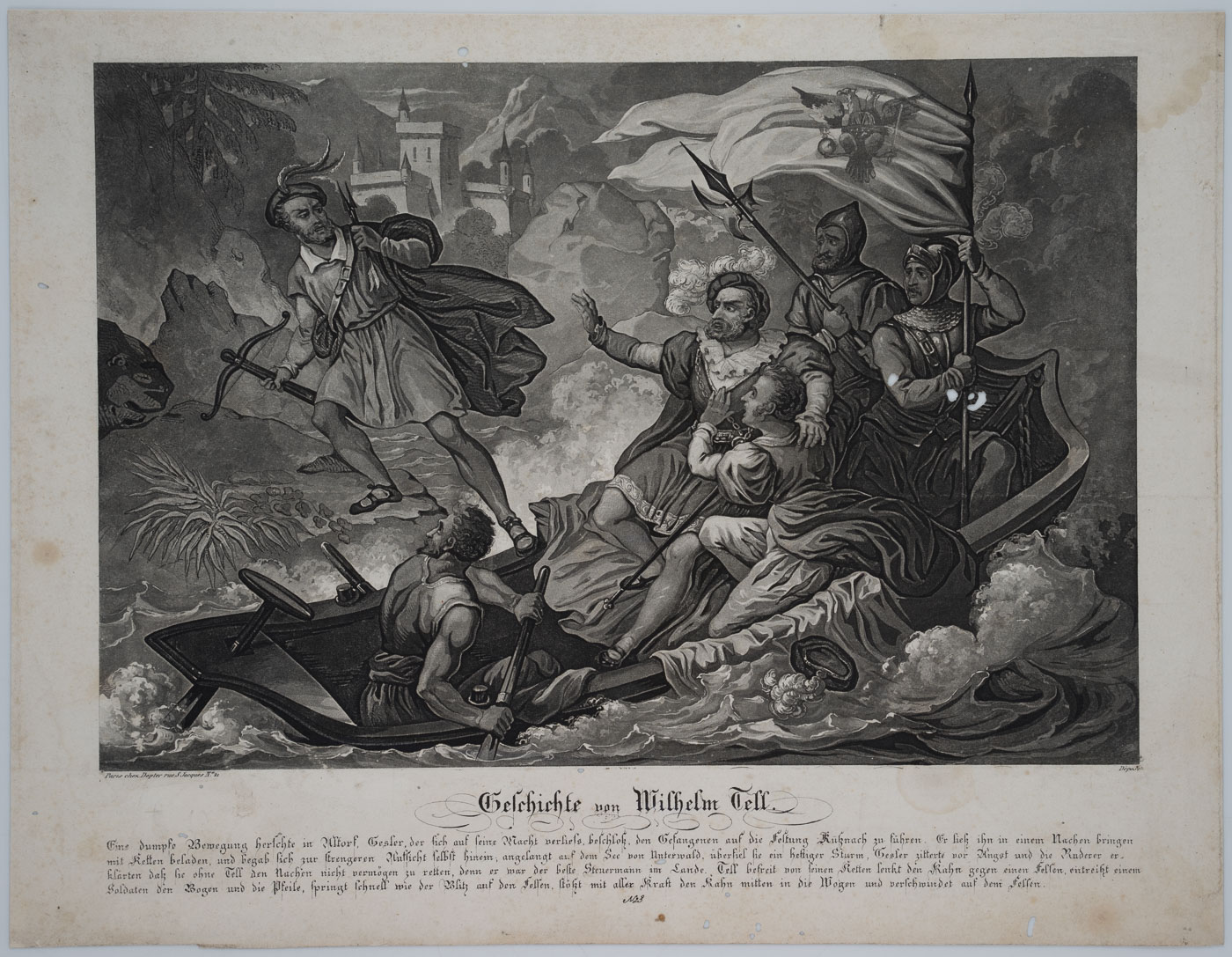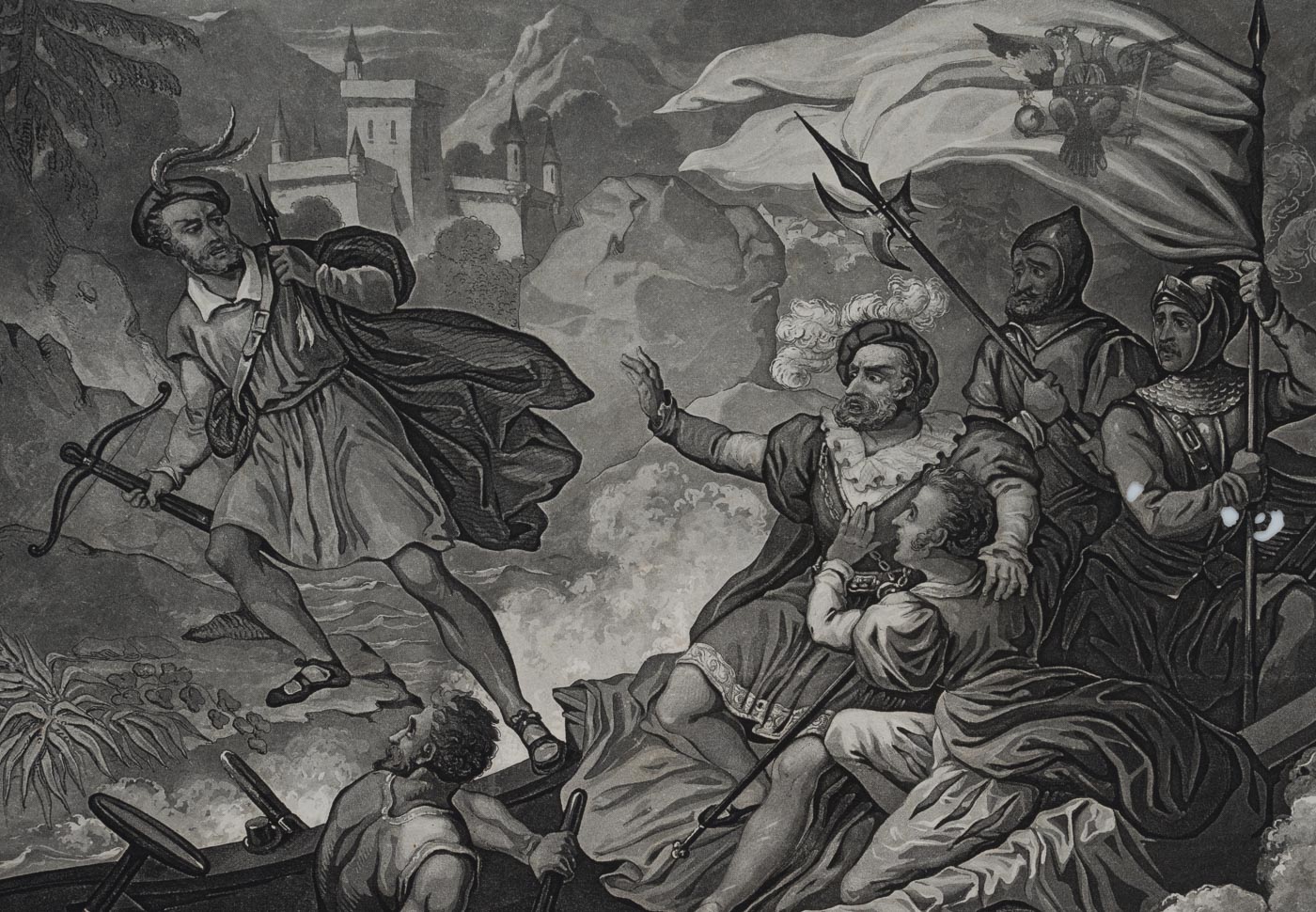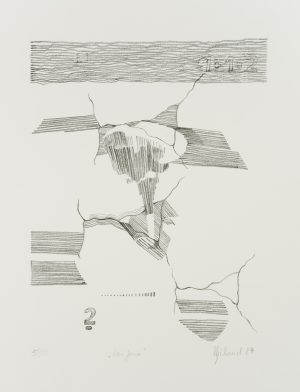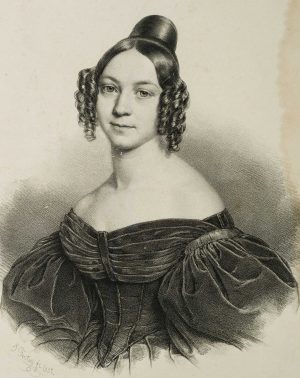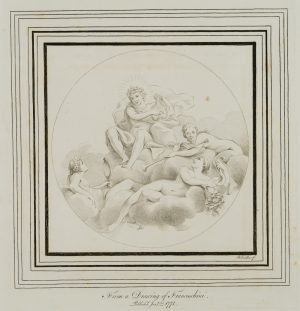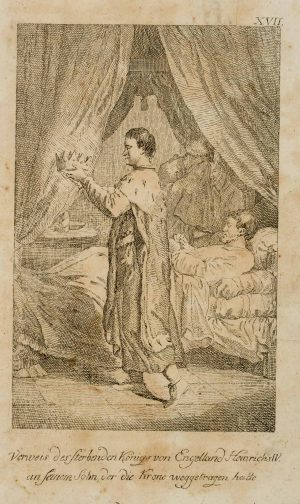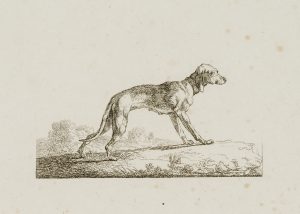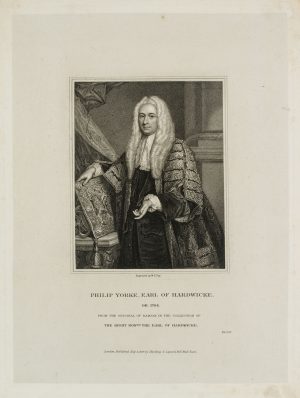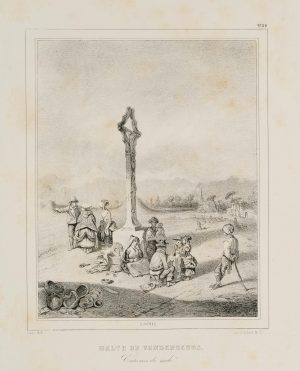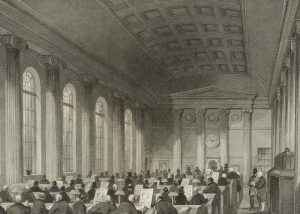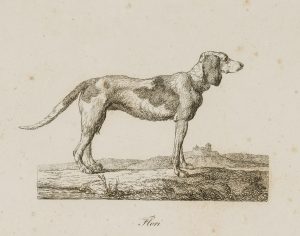Unbekannt (19. Jahrhundert), Wilhelm Tell entkommt dem Landvogt, um 1870, Radierung
- Technik: Radierung auf Papier
- Datierung: um 1870
- Beschreibung: Darstellung aus dem Leben des schweizer Freiheitskämpfers Wilhelm Tell. In einer der vielen Tell-Legende lässt der habsburgische Landvogt Gessler zu Altdorf einen Hut auf eine Stange stecken und befiehlt den einheimischen Untertanen, diesen jedes Mal zu grüssen, wenn sie an ihm vorübergehen. Wilhelm Tell, ein weithin bekannter Armbrustschütze, verweigert den Gruss, und der Vogt befiehlt ihm daraufhin, einen Apfel vom Kopf seines Sohnes Walter zu schiessen. Sein Kind müsse andernfalls mit ihm sterben. Tell tut widerstrebend, wie ihm geheissen, und trifft den Apfel. Er wird gefragt, wozu er sich einen zweiten Pfeil genommen hat und antwortet, wenn er sein Kind getroffen hätte, wäre dieser für den Vogt bestimmt gewesen. Daher lässt der Vogt ihn gefesselt auf seine Burg nach Küssnacht überführen. Auf dem Vierwaldstättersee aber bringt ein Sturm das Schiff in Gefahr und Tell wird seiner Fesseln entledigt, um das Boot zu lenken. Geschickt steuert er es gegen das Ufer, wo die Steilwand Axen sich erhebt, und springt dort auf eine hervorstehende Felsplatte, die noch heute Tellsplatte heisst. Er eilt über die Berge nach Küssnacht, erwartet den Vogt in einem Hohlweg, der Hohlen Gasse, und erschiesst ihn aus sicherem Versteck mit der Armbrust.
- Schlagworte: Porträt, Schweiz, Romantik, 1850-1899
- Größe: 34,7 cm x 26,8 cm, Darstellung: 29,9 cm x 20,4 cm
- Zustand: Akzeptabler Zustand. Ganzseitig blasse Verfärbungen und schwache Knickspuren. Vereinzelt Löcher durch Wurmfraß im Bereich der Ränder. Horizontale Knickspur, mittig.
English Version:
Unknown (19th century), William Tell escapes from the bailiff, c. 1870, Etching
- Technique: Etching on Paper
- Date: c. 1870
- Description: Depiction from the life of the Swiss freedom fighter William Tell. In one of the many Tell legends, the Habsburg bailiff Gessler of Altdorf has a hat stuck on a pole and orders the local subjects to salute it every time they pass him. William Tell, a widely known crossbowman, refuses the salute, and the bailiff then orders him to shoot an apple from the head of his son Walter. Otherwise his child must die with him. Tell reluctantly does as he is told and hits the apple. He is asked why he took a second arrow and answers that if he had hit his child, it would have been intended for the bailiff. The bailiff therefore has him tied up and taken to his castle in Küssnacht. On Lake Lucerne, however, a storm puts the ship in danger and Tell is released from his bonds to steer the boat. He skilfully steers it towards the shore, where the steep face Axen rises, and there he jumps onto a protruding rock plate, which is still called Tellsplatte today. He hurries over the mountains to Küssnacht, awaits the bailiff in a hollow way, the Hohlen Gasse, and shoots him from a safe hiding place with his crossbow.
- Keywords: 19th century, Romanticism, Portraits, Switzerland,
- Size: 34,7 cm x 26,8 cm (13,7 x 10,6 in), Depiction: 29,9 cm x 20,4 cm (11,8 x 8 in)
- Condition: Rather good condition. Pale discolourations and weak creases on all sides. Isolated holes due to worm damage in the area of the margins. Horizontal crease mark, in the centre.

